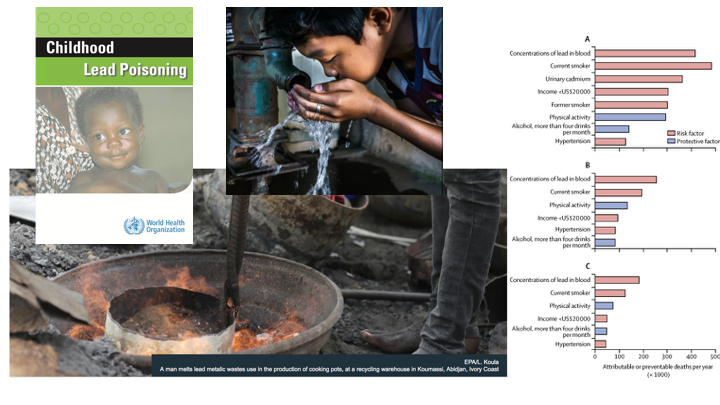Image

Source
Lanphear, P. Bruce, Stephen Rauch, Peggy Auinger, Ryan W. Allen, Richard W. Hornung. 2018. “Low level lead exposure and mortality in US adults: a population based cohort study.” The Lancet Public Health 3, no.4: PE177-PE184. https://doi.org/10.1016/S2468-2667(18)30025-2
World Health Organization. 2018. “Lead Poisoning and Health.” Accessed Nov. 11, 2018. http://www.who.int/news-room/fact-sheets/detail/lead-poisoning-and-health
Language
English
Contributor(s)
Group Audience
English

Caption: The left three images are taken from the World Health Organization (WHO) website on lead poisoning. The photo on the bottom is the main photo on the website. The one on the top left is the cover for a booklet on lead poisoning published by WHO and the photo in top middle is from a photoseries on environmental health from WHO. All three point to a particular population, mainly brown and black and in a third world country, as being the most susceptible to lead poisoning even though a study done by scientists at Simon Fraser University estimates that lead exposure contributes to 400,000 deaths per year in the US. Result of study is on the right.
Design Statement: I juxtaposed these 4 images (the three from WHO and one from a study done by Simon Fraser) because the three from WHO point to a particular population, mainly brown and black and in a third world country, as being the most susceptible to lead poisoning even though the study from Simon Fraser, as well as recent events such as Flint, Michigan, point to unsafe drinking water and poor infrastructures in the US as well. Representations of potential victims of lead poisoning or other enviromental health hazards influence perceptions of risk and who is most likely to be at risk. As a result, little attention is paid to the risks and hazards experienced daily by many Americans.